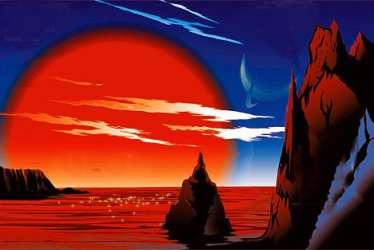
Astronomers have found the most Sun-like star yet, and they say it is an ideal place to hunt for alien civilisations.
The star, called HIP 56948, lies a little more than 200 light years from Earth. Its size, mass, temperature, and chemical makeup are all so similar to the Sun's that no measurable differences could be found in high-resolution observations made by the 2.7-metre telescope at the McDonald Observatory in Texas, US.
The analysis was carried out by Jorge Melendez of Mount Stromlo Observatory in Weston Creek, Australia, and Ivan Ramirez of the University of Texas in Austin, US.
Other very Sun-like stars have previously been identified, including 18 Scorpii, HD 98618, and HIP 100963. But those three stars have several times more lithium than the Sun, while HIP 56948 is almost identical to the Sun in this respect as well, making it an even closer match.
That similarity might be important, since some studies have suggested that stars with less lithium are less active, experiencing fewer outbursts, or flares, that can bathe planets in deadly radiation, says Ramirez. If that is borne out by further observations, this star probably has a higher chance of harbouring life than other solar doppelgangers, he says.
Sun-like stars are considered good hunting ground for the search for extraterrestrial intelligence (SETI), says Margaret Turnbull of the Space Telescope Science Institute in Baltimore, Maryland, US. She helped draw up an existing list of about 17,000 high-priority targets for SETI called HabCat.
Starting point
"We don't know that Sun-like stars are necessarily the 'best' for intelligent life, but they are certainly a decent starting point given that we know of at least one civilisation around such a star," she told New Scientist.
Peter Backus of the SETI Institute in Mountain View, California, US, who is heading the institute's upcoming search for alien life with the new Allen Telescope Array, says the Sun's newly identified twin will be targeted in the search, and was already on the HabCat list.
"It's on the list, but I don't think it will be given any special treatment," he told New Scientist. "It's still a matter of speculation on just what range of stars could host habitable planets. We will eventually get around to observing all of the stars [on the list]."
Astronomers at McDonald Observatory have already started looking for planets around HIP 56948, and while observations continue, they have so far ruled out any giant planets in tight orbits around the star - so-called 'hot Jupiters', which would be the easiest planets to spot.
More time
The star does differ in one way from the Sun - it appears to be about 1 billion years older. That should make it all the more attractive for SETI, Ramirez says, because older stars have had more time to produce intelligent civilisations. "Assuming that these stars have planets and those planets have life, then you have given more time for that life to evolve," he says.
Although astronomers hope to observe a radio signal from a civilisation around the star, its distance of over 200 light years from Earth means none of our radio or television signals would have had time to reach it yet, he says. "If there is life there and intelligent life, then they haven't heard from us yet."
The Allen Telescope Array will likely begin observations in November 2007, Backus says, although it will initially be looking at broad swathes of the sky rather than focusing on individual stars in the catalogue.

No comments:
Post a Comment